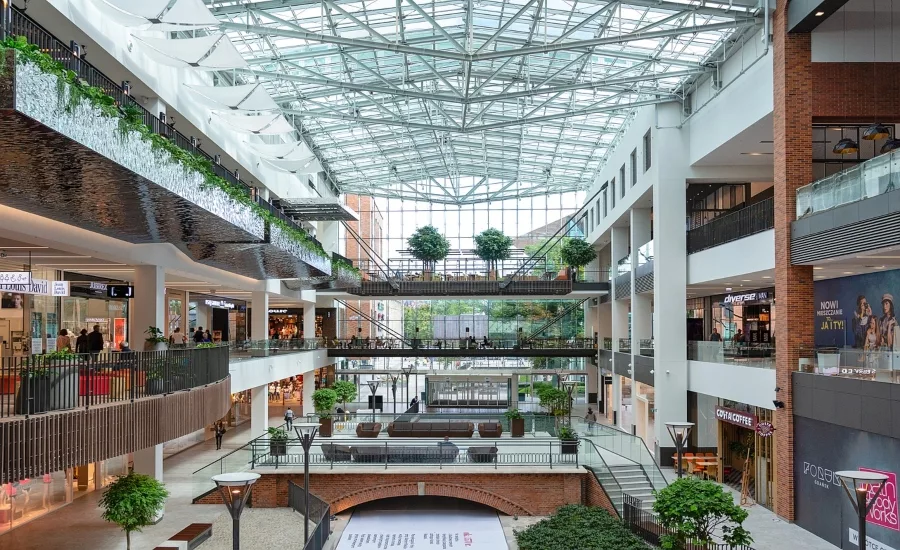Leveraging occupancy analytics for better business performance

Occupancy restrictions have been a key component of state and local mandates meant to prevent the spread of COVID-19 in commercial establishments. Some places restrict occupancy to 10%, 25%, or 50% of fire code capacity; others specify only a certain number of people can be in a facility at one time.
While there are a number of solutions for estimating occupancy, one that is growing in demand is a video analytic-based solution, often called an occupancy analytic. Approximating a person-count is ideal for meeting mandates during a health crisis and it can be accomplished in a number of different ways, one of which involves just a person at a door using a simple app. However, video analytic-based solutions have broader capabilities that reach well beyond a pandemic. Because they are network-based, they offer real-time business intelligence benefits that help companies, such as retailers, better manage, better market, and better operate their stores.
Generally speaking, occupancy analytics use an algorithm that looks at pixel changes based on activity, directional flow and other similar criteria. It may involve artificial intelligence or it may be simply algorithms that determine — based on pixel size, pixel density, length of time, and direction of flow — what is happening and then correlate that data into actual information.
Occupancy analytics can be deployed “at the edge” with an edge device, such as a network camera with the capability, processing power, and intelligence onboard. The advantage of edge processing is that a business won’t necessarily need to invest in an entire suite of analytic solutions on a server.
However, occupancy analytics providers have different approaches to their solutions: some are edge-based, some are server-based, and some are cloud-based. There also is a hybrid approach in which part of the processing is done at the camera and part is done at the server or in the cloud. This allows businesses to run a robust analytic without the financial burden of purchasing a server or infrastructure to send a video stream to the cloud; it simply sends the metadata.
A Wide Range of Applications
The advantage of using network video for occupancy analytics is that it provides a business with multiple uses. Beside counting people, it can be simultaneously recording an image, triggering a notification, and transmitting the count to a public-view monitor. This could show people that the facility is at capacity and they should wait to enter; and when no longer at capacity, more people could enter. It gives businesses the ability to collect data, collect video evidence, and project that data to others. It is also possible, because the occupancy data exists in an IP format, that it could be posted to a business’ website or app, so potential customers could learn if there is a line to enter a store due to occupancy restrictions before they even head to the location.
An occupancy analytics solution can tell managers how people have entered their store, how long they stay, and approximately how many people are present at any given time. Managers can correlate that data with their point-of-sale system to determine conversion rates. Other analytics could complement the data, such as dwell time and queue management.
In addition to features centered on estimating occupancy for the purpose of meeting mandates, there are other uses that gather business intelligence, including:
- Identifying busy times at a facility when more staff may be needed. Based on a real-time count of people in a store or other venue, managers will know if they should immediately reallocate resources — in other words, direct an employee from another area to help on the sales floor. They also can use the data when scheduling a workforce for future shifts.
- Determining slow times when shelf restocking or when sanitizing (to meet COVID-19 requirements) is best conducted. Looking at trends over time, managers might see that Wednesdays at 2 p.m., for example, have the least amount of foot traffic, so they would establish that to be a good time to restock store shelves, sanitize the facility, or do another activity.
- Correlating data to learn if certain promotions or marketing campaigns resulted in increased traffic and, ultimately, sales conversions and increased revenue. In a real-life example, a store ran a promotion to increase traffic by offering free sushi to anyone who came in. The business was able to quantify the data from their occupancy analytic, which proved that their promotion had resulted in a dramatic increase in foot traffic, which subsequently correlated to a dramatic increase in sales on that day. They were able to show that their marketing efforts were effective.
Many retailers have their own business intelligence tools and dashboards, and network-based occupancy analytics can be populated in those dashboards. The analytics provider may offer a platform for aggregating all of the analytics a business uses, such as occupancy, dwell times, line queueing, and more. A web-based dashboard can bring in the data from multiple stores or office locations so they can be compared.
Retailers and other businesses can integrate occupancy analytics with systems such as network audio and public-view monitors to send notifications about capacity, for example. Integration with a point-of-sale system can determine sales conversion rates tied to store traffic. Integration to inventory systems can ensure sufficient product availability at designated times.
What’s to Gain?
Loss prevention and safety and risk employees can benefit from occupancy analytics, especially during the current health crisis. But beyond the pandemic, employees in operations, marketing, and merchandising can benefit considerably by learning all about the foot traffic in their stores.
Operating with actual data instead of just a hunch provides a number of benefits — namely, that the business is adhering to local occupancy mandates so it won’t be faced with fines, and that it is not losing out on sales by not having the appropriate staffing level or stock quantity. All of this ties into operating at peak efficiency and maximizing your return on investment.
The bottom line of utilizing a video network-based occupancy analytic is that it assists businesses in the COVID-19 environment at present, and will provide valuable business intelligence in the future. In fact, the data gathered now can even be compared with data gathered once the health crisis is over, to discern any trends in business performance. Occupancy analytics are a powerful business tool that prove their worth in more ways than one.
This article originally ran in Security, a twice-monthly security-focused eNewsletter for security end users, brought to you by Security Magazine. Subscribe here.
Looking for a reprint of this article?
From high-res PDFs to custom plaques, order your copy today!







